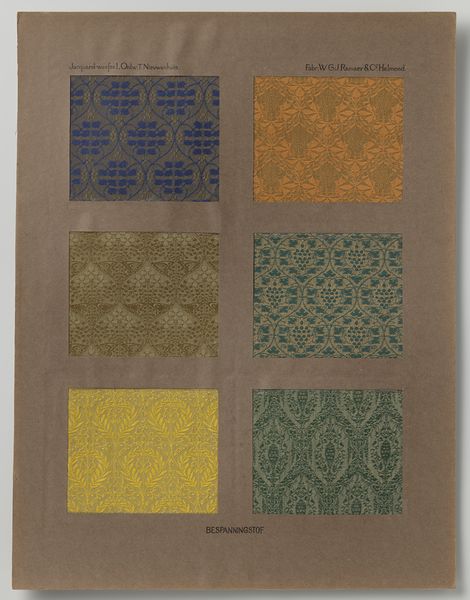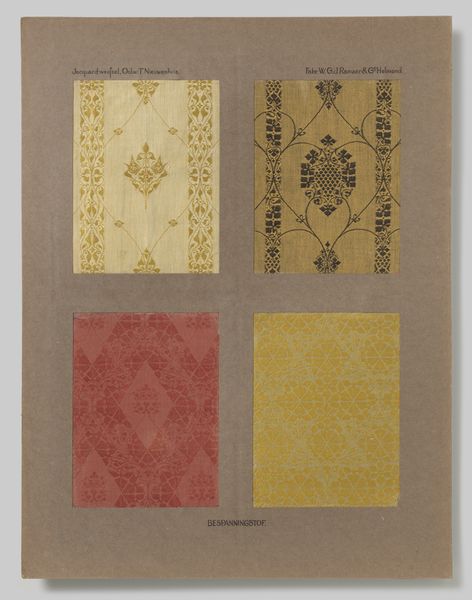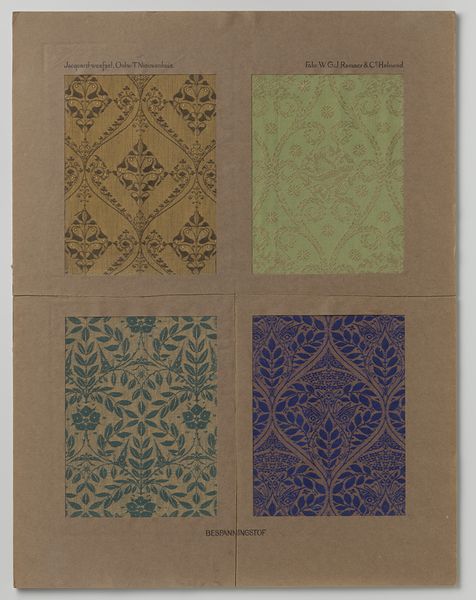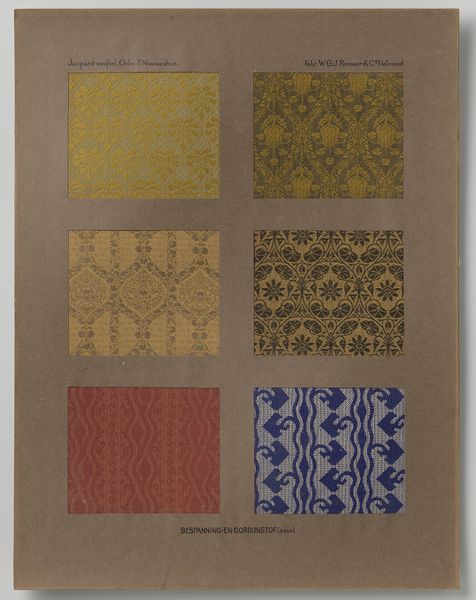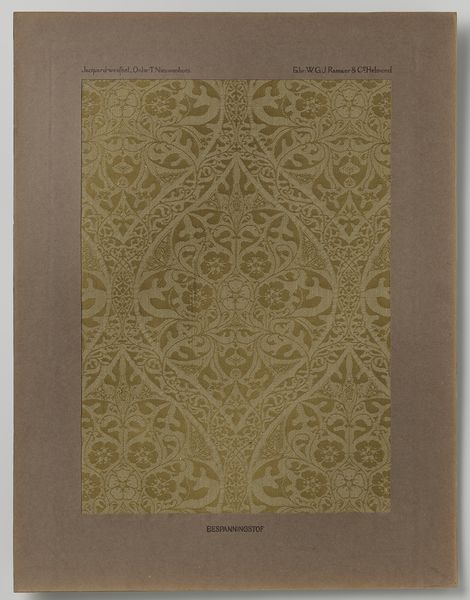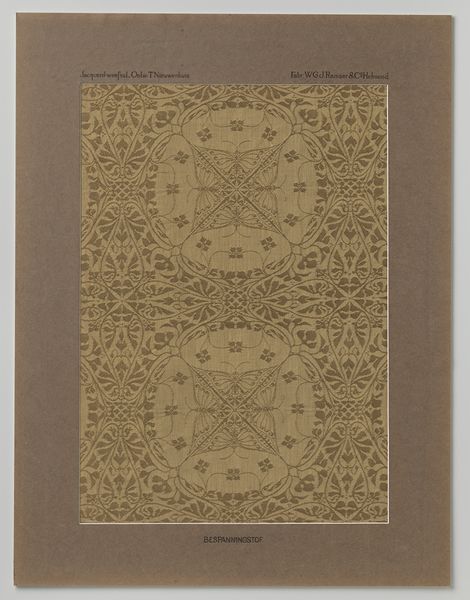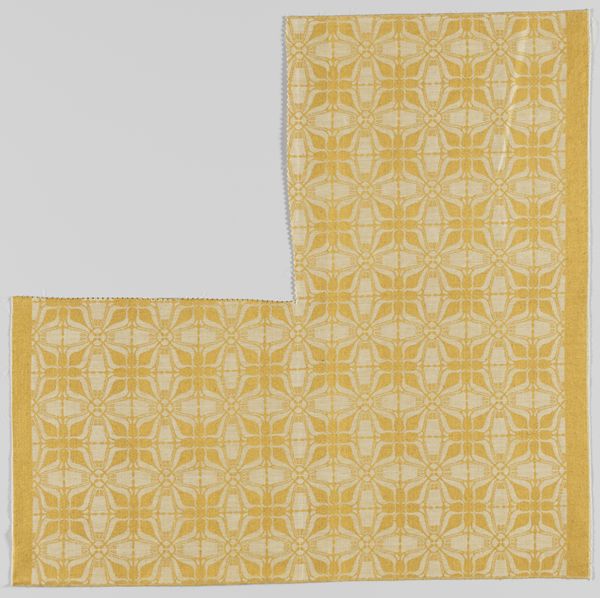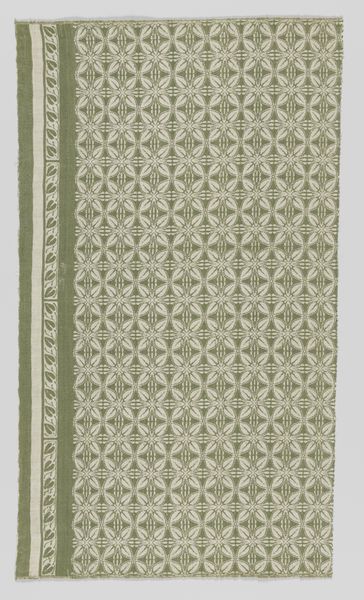
Stalen bespanningsstof naar ontwerp van Theo Nieuwenhuis in passe-partout c. 1910
0:00
0:00
textile
#
art-nouveau
#
pattern
#
textile
#
pattern repetition
#
decorative-art
Dimensions: height 64.0 cm, width 49.5 cm
Copyright: Rijks Museum: Open Domain
Curator: Here we have a sample board featuring steel covering fabrics designed by Theo Nieuwenhuis around 1910. The Art Nouveau influence is evident in these designs. What strikes you first about these samples? Editor: Immediately, I see echoes of traditional motifs reimagined. The designs aren't overtly floral, but the stylized, almost symmetrical, arrangements trigger a sense of cultural memory—a whisper of palatial patterns. Curator: Precisely. Nieuwenhuis was working within a cultural context where industrialization was rapidly changing society. Art Nouveau, with its embrace of natural forms and decorative motifs, was often interpreted as a form of resistance against the perceived coldness of industrial production. Editor: Looking closer at the colors in the upper left sample, I notice how the gold and the gray fight for dominance, yet create visual tension together. Given the social landscape, this duality could also reflect society’s negotiation of change, reflecting anxieties and aspiration in early 20th century life. Curator: Absolutely. Considering the steel support, the combination might even reflect industrial advancement presented through organic Art Nouveau sensibilities. The fabric samples, viewed as part of domestic design, would be consumed in domestic interiors that subtly reinforced cultural ideologies. These spaces acted almost as performative stages of identity, class, and social standing. Editor: It's fascinating how patterns meant for everyday use could be so loaded with meaning! There’s also a beautiful simplicity about these designs, suggesting an ethos to make art accessible and affordable. Curator: It points to the Arts and Crafts movement influence, where functionality met aesthetics, with implications reaching beyond aesthetics, challenging societal norms and making design part of everyday discussion. Editor: Now I'm drawn to the way the patterns play with symmetry and repetition. These basic formal concepts add a sense of harmony. This ordered aesthetic also may express psychological needs during turbulent social changes. Curator: So while Nieuwenhuis' steel covering fabric samples appear decorative on the surface, examining them through cultural and historical lenses reveal social negotiations with design itself. Editor: Indeed, what appeared as patterns now echo historical and emotional realities. These quiet textiles spoke volumes about identity.
Comments
No comments
Be the first to comment and join the conversation on the ultimate creative platform.
